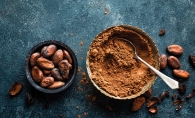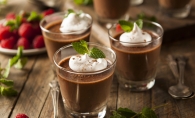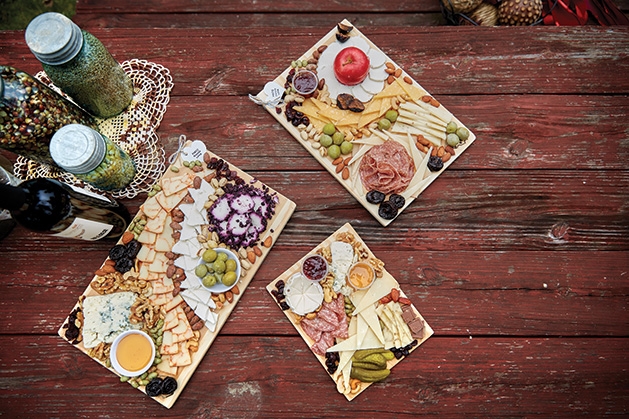
Between Hydes and Rice lakes off Highway 5 rests the Leonard Family Farm, 160 acres of corn and alfalfa fields and dairy cows. It’s also home to The Grater Good, offering beautifully-created artisan cheese and meat boards, hearty bread baskets and cheese tasting sessions—culled, created and taught by someone who knows a thing or two about dairy. After all, it runs in her blood—and has for generations.
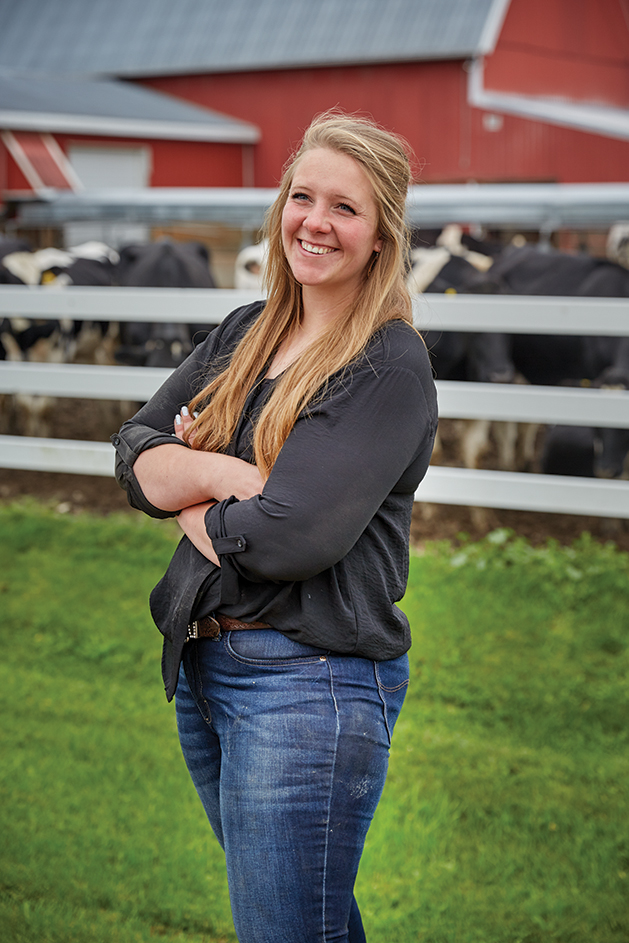
For six generations, Christine Leonard’s family has operated a dairy farm just west of the Twin Cities in Carver County. The family—the 2020 Carver County Farm Family of the Year—will celebrate its farming sesquicentennial next year. “I’ve loved cows for as long as I can remember, and most of my earliest memories are working alongside my family taking care of our land and animals,” she says.
In 2016, Leonard, 26, earned a degree in food science from the University of Wisconsin-Stout and spent a year as an assistant cheesemaker before returning full-time to her family’s dairy farm. Days are filled with milking 45 cows (twice a day), feeding and bedding the animals and doing other farm maintenance. “Our girls produce around 400 gallons of milk every day,” she says, noting the milk is co-opted with Bongards Creamery, just three miles down the road.
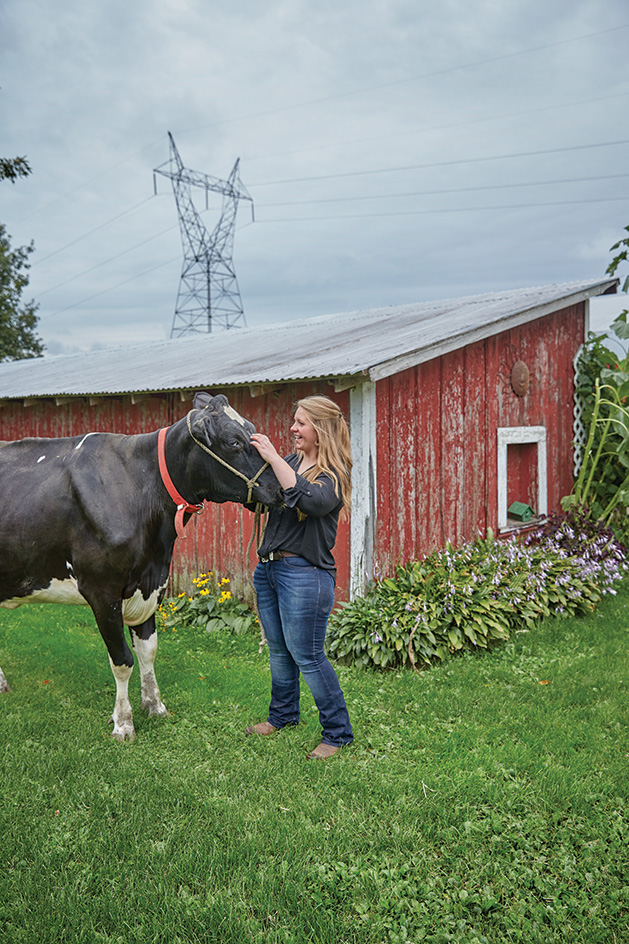
“There’s something magical about taking care of something that’s taken care of the generations before me,” Leonard says. “But even more than that, it’s the cows. I don’t know if you’ve ever gotten to spend much time with them, but their spots aren’t the only thing that makes them different. They have personalities, they do goofy things, and they produce a miracle food. I’m lucky to get to spend my time taking care of them because they take care of me.”

Pass the Platter
In addition to her farm work, Leonard launched The Grater Good last holiday season. “Before that, I had been making platters for myself and friends … Last fall, I launched my social media pages and website, just trying to take the step to see if this could really work,” she says.
While the popularity of her platters propelled her forward, like many new businesses, necessity was an active ingredient in opening the business.
“The margins that farmers are working with are incredibly tight [May 2020 milk prices were the same as they were in the 1980s], and, in order to keep doing what I love, I had to think outside of the box,” Leonard says.
The business has taken off, and Leonard hopes to add a cheese shop on the farm next summer. “My most popular [board] during [COVID-19] lockdown has been The Taste platter for two,” Leonard says. “During the holidays, however, my most popular sizes are the The Nibble [serves five-seven people] and The Bite [serves 10-15 people].” She offers larger sizes, including The Nosh and The Feast. “They become a beautiful centerpiece, a delicious appetizer and a great way to support local [business],” she says.
“My platters are a way for me to be able to afford to continue to be a dairy farmer,” Leonard says. “The Grater Good was a way for me to share something I love [cheese] in a fun, unique way while supporting my dream of being a farmer.” But it’s the other slice of her cheese business–the tasting events–that truly taps into her love of dairy.
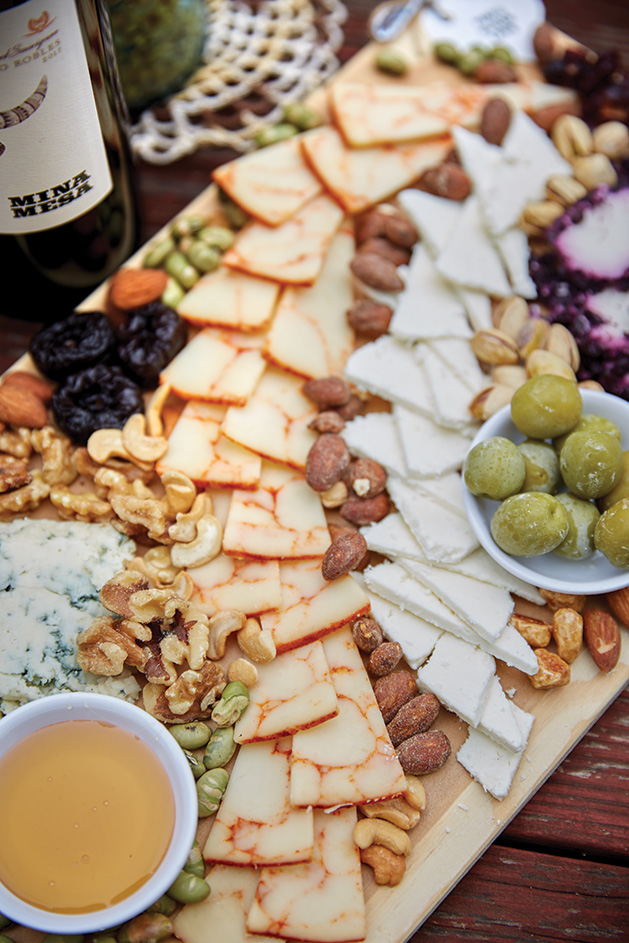
How well do you know your cheese? It’s not enough to distinguish between mild and sharp or smooth and crumbly varieties. Sweet, salty, sour, bitter and umami–cheese can wedge into any of the profiles, and Leonard’s cheese tasting classes help expand attendees’ knowledge and taste appreciation. You pick the venue, and she’ll bring the cheese. Personalized cheese classes feature five cheeses to work your palate and a worksheet, which can be used to designate cheeses you did or didn’t enjoy.
“A class is a great way to learn about local food and agriculture while having an experience … I take time to both perfectly pair and learn the background story on each cheese I bring,” Leonard says. Typically lasing 1½ hours, classes cover issues related to farming and the farms themselves, the cheese making process, cheesemakers and the milk-producing animals.
“It’s so fun sharing more about how the same four ingredients (milk, rennet, cultures and salt) that make up the base of every cheese can look and taste so different,” Leonard says. “Even the same cheese recipe, made by the same cheesemaker, can look and taste different at the artisan level. Things like what the animal is eating at that point in time, how the weather was the day of the cheese make, how old the cheese is and how the ‘cheese caves’ felt while they were stored can have drastic effects. One of my favorite things is the personality that each batch of cheese gets. Explaining to people how that works and letting them know that they should celebrate that it tastes a little different than the last time they tried it is a truly rewarding experience.”
Cheese, for some, can be a bit befuddling. “I think people are most surprised at the fact that good bacteria and molds are what give cheeses their flavor,” Leonard says. (The mold your cheese might pick up in your refrigerator is not the same as the carefully-picked cultures that give cheeses their varietal flavors.) “Cheesemakers can carefully and purposefully select from a whole catalog of cultures that do things from making a cheese more buttery or caramel flavored to affecting its texture and crumble,” she says. “These natural processes are what make these cheeses special and aren’t something to be afraid of.”
Not only are the classes ideal for those wanting to expand their culinary knowledge, they make great holiday gifts, too. “They’re an experience rather than another item that just takes up room on a shelf,” Leonard says. “Not only is it a fun memory, but you just might find your new favorite cheese in the process.”
Is the cheese used in The Grater Good made from her farm’s milk? “Making cheese is something I’m working toward, but I am not quite there yet. Building a creamery is a huge investment of time and resources, but I’m hoping that I will be ready to take on cheese making by 2030 … The main focus of my business is supporting local when and where I can. The cheeses I feature are often from creameries in Minnesota, Wisconsin and Iowa. I try to develop a personal relationship with the cheesemakers and farmers because I love seeing their personalities play out in their cheeses. I work direct with these creameries in order to bring the best to my customers.”
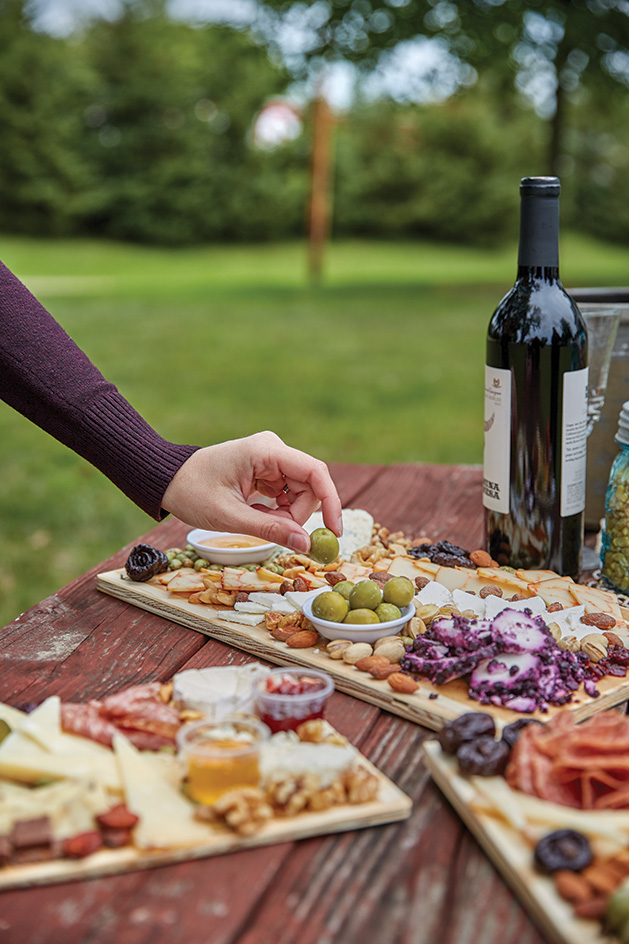
Cheers to Cheese
Wine and cheese go together like “Yes and please!” Kevin Castellano, general manager at Wayzata Wine and Spirits, recommends Charles Krug sauvignon blanc for Thanksgiving dinner, but it also pairs well with cheese. “My favorite to serve with a sauvignon blanc is a fresh goat cheese, like a chèvre,” Leonard says, giving a nod to Singing Hills Farms chèvre and a chevre log from Stickney Hill Dairy.
The Grater Good
952.334.3225
Instagram: @thegratergoodmn
Facebook: The Grater Good







